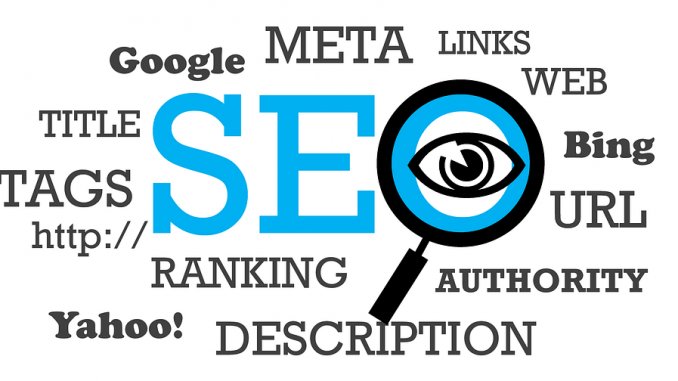
Search engines are constantly trying to improve user experience, changing their algorithms at least 500 times each year to improve their performance and provide the best results possible. Google has 200 different ranking factors that can impact your website’s rankings.
Because of this, search engine optimization is constantly changing. With the top tactics being continuously modified, it often feels like it is impossible to keep your site’s rank up. It can also be hard to decide which tactics and plugins are worth incorporating into your SEO strategy.
Yet, 93 percent of online participation starts with the search engine so being on the first page is vital. Not only will ranking highly encourage users to trust your website and your company, but you will get more traffic. The top five results receive 75.7 percent of the clicks. So even if you are on the first page, you might not be getting as much traffic as you need.
You can see why it is vital to stay on top of your SEO game. In 2018, there are several great ways to modernize your SEO strategy to help improve your rankings. Here are the top six ways we found to improve your SEO in 2018.
Google AMP Project
The Google AMP, or the Accelerated Mobile Pages, project is an open-source software launched in 2016 to improve website performance on mobile.
Integrating AMP into your strategy is vital because most people use mobile as their main source of accessing the Internet. Because of this, Google prefers websites that provide a great user experience no matter what device they are on.
A site that has been optimized for mobile transforms depending on which device is used. It changes for tablets and the phones, prioritizing information and images while creating larger buttons and reformatting the content to be read easily.
AMP improves the speed at which the website loads on different devices, allowing immediate page loading regardless of the device. It is able to look at the image, ad, and iframes and decide what position and size they should be before they are downloaded so the user doesn’t need to wait for any of the resources to download.
JSON Schema
JSON Schema is part of the movement to encourage Google to provide rich answers through semantic search. This allows the search engine to have a deeper understanding of what the user is looking for by not only crawling for keywords, but also determining the contextual meanings of the words the person is using to search.
The schema describes the data in a machine readable and human readable documentation. It also provides information for the search engine to better understand your content, allowing them to provide the best results possible. The enhanced descriptions appear in the search results for search engines like Google, Bing, Yandex and Yahoo.
In the age of RankBrain and Hummingbird, having this schema markup can have a major influence on your rankings. It is also a huge gap in the market at the moment since less than one-third of search results have a schema market. Taking advantage of this tactic can drastically improve how your webpage appears to the SERPs.
RankBrain
RankBrain was introduced in 2015 as an artificial intelligence system that uses machine learning to process search results. Google claims that it is the third biggest factor in determining rankings. The program is a part of the Hummingbird algorithm to sort through the billions of websites and pages to determine the most relevant information for the user.
RankBrain is particularly important because it helps process long-tail keywords. It interprets the query and translates them with the semantic search function to find the best results for the user.
To keep up with the algorithm that is constantly learning and adapting to user search queries, start incorporating more natural language with your keywords.
Writing for the Reader, NOT Google
In the early stages of SEO, many companies would use black hat SEO techniques to improve their rankings. That could be anything from keyword stuffing to invisible text.
Google is focused on providing the best experience possible for the user, so those techniques can cause your rankings to drop.
Instead, Google and other search engines prefer content that is useful and informative. Though you still want to include both short- and long-tail keywords, your content needs to be focused on providing the best resource and response to the reader’s query.
Compelling content creates more social shares and causes the reader to stay on the website longer and explore more pages — these are all factors Google uses to determine your site’s authority and rankings.
Social Sharing
Social sharing will also be a necessity for SEO in 2018. After all, stories that are shared often will rank well. This is because social engagement tends to increase both the total unique page view and your higher organic click-through rates.
You can improve your SEO with social shares in two ways:
• First, you want to make it easy for readers to share the content. Place the social share buttons on both the top and the bottom of the content.
• Second, make sure your content is relevant and engaging. This creates a more natural desire for readers to mention and link to your website and share the content on social media platforms.
Joel House helps small to medium businesses grow their revenues through increased search traffic. As the owner of Australia’s highest ranking SEO Agency, he has a burning desire to help small businesses with SEO that actually works. When he isn’t helping small businesses grow, he is furiously reading to stay on the cutting edge.The post SEO in 2018: 5 Ways to Modernize Your SEO to Stay Ahead of the Trends appeared first on SiteProNews.
Source: Site Pro News
Link: SEO in 2018: 5 Ways to Modernize Your SEO to Stay Ahead of the Trends



Leave a Reply